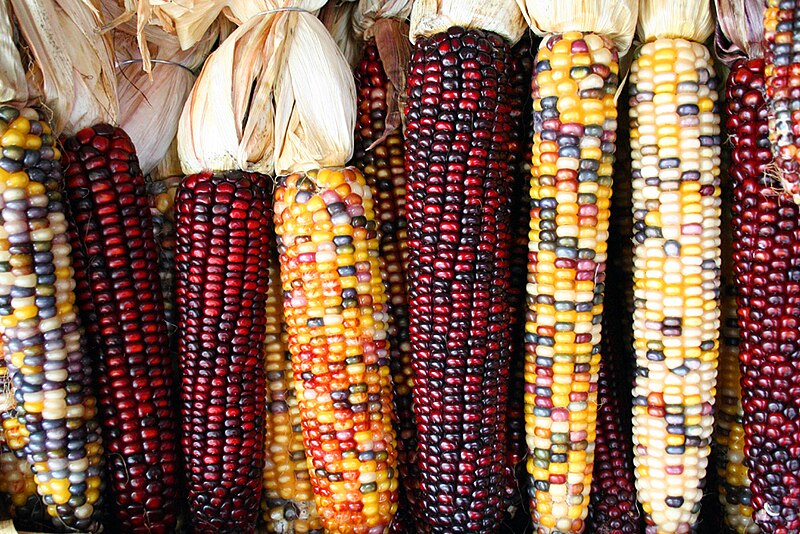I loafe and invite my soul,
I lean and loafe at my ease observing a spear of summer grass.
. . .
A child said What is the grass? fetching it to me with full hands;
How could I answer the child? I do not know what it is any more than he.
. . .
I believe a leaf of grass is no less than the journey work of the stars,
And the pismire is equally perfect, and a grain of sand, and the egg
of the wren,
And the tree-toad is a chef-d'oeuvre for the highest,
And the running blackberry would adorn the parlors of heaven,
And the narrowest hinge in my hand puts to scorn all machinery,
And the cow crunching with depress'd head surpasses any statue,
And a mouse is miracle enough to stagger sextillions of infidels.
I find I incorporate gneiss, coal, long-threaded moss, fruits,
grains, esculent roots,
And am stucco'd with quadrupeds and birds all over,
And have distanced what is behind me for good reasons,
But call any thing back again when I desire it.
(a few lines from Walt Whitman's Leaves of Grass)
Remember the Rabbitfoot grass? (memory jogger below)
Well, here's another that closely resembles it. This one is Canary grass, and as with its look-alike, it grows alongside The Creek now.
 | |
|
And another . . .
 |
| Texas fluffgrass (Tridens texanus) |
 |
| Tridens texanus |
Earlier in the year we built a big brush fire and last year's growth on this specimen burnt low. But as evidenced in the first photograph, fires can be good for grasses.
Below are some visions of a grass that most likely was an ancestor to our modern corn. It's a tall and lovely thing called Gamma grass or Eastern gamma grass.Later in the season this gramma grass will produce fruits that look remotely similar to corn kernals, suggesting again the close relationship between Tripsacum and Zea (corn).
 |
| Gamma Grass (Tripsacum Dactyloides) |
 |
| Tripsacum Dactyloides |
 |
| Tripsacum Dactyloides (female) |
 |
| Tripsacum Dactyloides (male) |
| Kingdom: | Plantae |
| Division: | Magnoliophyta |
| Class: | Liliopsida |
| Order: | Cyperales |
| Family: | Poaceae |
| Subfamily: | Panicoideae |
| Tribe: | Maydeae |
| Genus: | Tripsacum |
| Species: | T. dactyloides |
As Harlin points out, we have so many grasses with the name "gramma" because, as it turns out, the word means more than an alternate spelling for grandmother. The Latin "gramen" suggests "grass" or "grass fodder." The Proto-Indo-European *ghros- perhaps meant "young shoot, sprout," from base *ghre- which is related to grow and green.
To "graze" comes from the Old English grasian, "to feed on grass," from græs "grass." And a "swath" was the "space covered by the single cut of a scythe" cutting through a meadow of grass because "meadow" itself is from the Old English mædwe, originally referring to "land covered in grass which is mown for hay," itself derived from the Old English heawan "to cut." And of little relation, some have suggested that our word "fog" comes from a Norwegian word fogg, meaning “long grass in moist hollow.” Root words.
Hay. The gramma grasses often find themselves cut and dried like so many others for so many years.
Of course, we aren't the only species to make hay and store the harvest of grass. All kinds of rodents do it. And insects. I've read about leaf cutter ants growing fungus gardens on hoards of shredded jungle cut and stored away under ground. A few years ago I first watched the western leafcutter bee harvest half a morning glory vine as if it were so many leafy fields suspended in air and tied round a post. The small black and gray striped. Megachili perihirta of the Megachilid Family is half an inch long and could easily be overlooked for its close resemblance to any small gray fly you've ever almost seen flying about the yard or lying dead beneath a window screen. I do not even know how long I failed even to notice the chomps taken out of the morning glory leaves and the incredibly industrious insect responsible. The bee buzzes slowly onto the leaf, sets the edge of leaf between two bee- knives disguised as mandibles, and in three seconds it has cut out an oval or a round piece of leaf the size of your iris. Then the bee folds the piece of leaf like an enchilada between its two sets of legs, three on each side. Often it then flies with its harvests to a nearby leaf, rests there for ten or fifteen seconds before buzzing back to a small space between the boards of the porch. Almost every leaf of the morning glory plant has at least one oval or round cut-out on its edge, and most of the leaves have six or seven. So in what shape does the bee stack its round bales of drying leaf, or in what manner does it ensile its crop? I never did pry the wall boards from the studs to find out.
In all, there are about fifty species of "gramma" mostly native to North America. American gramma, Six-weeks gramma, Needle gramma, Gypsum gramma, Purple gramma, Texas gramma, Matted gramma, Blue gramma, Nealley gramma, Kay's gramma, Harry gramma, etc.
And compare the inflorescence of the "gramma" above with that of another one down at The Creek:
| Sideoats Gramma |
Love that sideoats gramma, our state grass.
 |
Zea mays |
No sound replies but winds that whistling near
Sweep the thin grass and passing, wildly plain.
(Wordsworth, from Salisbury Plain)


No comments:
Post a Comment